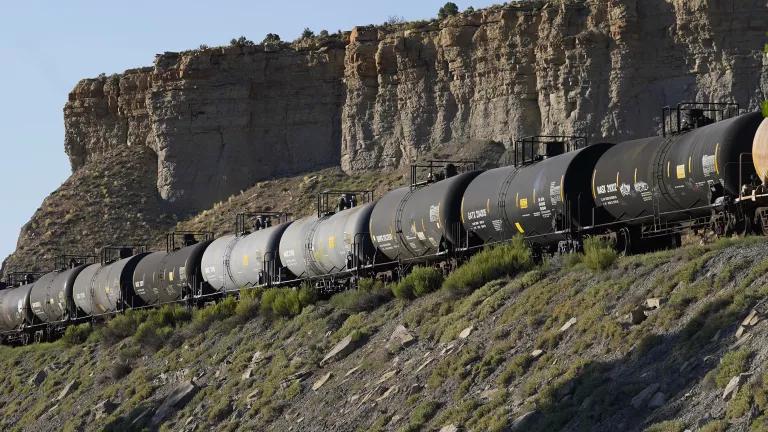In Fracking's Wake: New Rules Are Needed to Protect Our Health and Environment from Contaminated Wastewater
This paper analyzes the problem of wastewater generated from the hydraulic fracturing process of producing natural gas, particularly with regard to production in the Marcellus Shale.* It shows that, while hydraulic fracturing (often called "hydrofracking" or "fracking") generates massive amounts of polluted wastewater that threaten the health of our drinking water supplies, rivers, streams, and groundwater, federal and state regulations have not kept up with the dramatic growth in the practice and must be significantly strengthened to reduce the risks of fracking throughout the Marcellus region and elsewhere.**
Hydrofracking and the production of natural gas from fracked wells yield byproducts that must be managed carefully to avoid significant harms to human health and the environment. These wastewater by-products are known as "flowback" (fracturing fluid injected into a gas well that returns to the surface when drilling pressure is released) and "produced water" (all wastewater emerging from the well after production begins, much of which is salty water contained within the shale formation).
Because of these risks, shale gas wastewater must be carefully managed. The most common management options currently in use are recycling for additional hydraulic fracturing, treatment and discharge to surface waters, underground injection, storage in impoundments and tanks, and land application (road spreading). All of these options present some risk of harm to health or the environment, so they are regulated by the federal government and the states. But many of the current regulatory programs are not adequate to keep people and ecosystems safe. Consequently, this paper concludes with policy recommendations regarding how the regulation of shale gas wastewater management should be strengthened and improved.Both types of wastewater contain potentially harmful pollutants, including salts, organic hydrocarbons (sometimes referred to simply as oil and grease), inorganic and organic additives, and naturally occurring radioactive material (NORM). These pollutants can be dangerous if they are released into the environment or if people are exposed to them. They can be toxic to humans and aquatic life, radioactive, or corrosive. They can damage ecosystem health by depleting oxygen or causing algal blooms, or they can interact with disinfectants at drinking water plants to form cancer-causing chemicals.
UPDATES
Following the publication of this report, PADEP published revised files for 2011 Marcellus produced water volumes. Consequently, the data presented in this report do not match the data available on the PADEP website. There were minor changes to a number of data entries. The most significant change, however, was in the July to December 2011 data. There were very large changes to volumes sent to Reserved Environmental Services and Clean Streams, LLC. A total of 11,553,186 barrels sent to these two brine treatment plants that treat water for reuse was changed in the update to 275,077 barrels. This update likely represents a reporting error correction, as 11,553,186 is 42 times 275,077, suggesting gallons were initially reported incorrectly as barrels.
*This paper focuses primarily on hydraulic fracturing in the Marcellus Shale, although the issues raised herein are relevant anywhere fracking occurs. Thanks to the knowledge gained from years of experience with fracking in the Marcellus, highlighting that region can provide insight for other regions undergoing new or expanded fracking.
**Due to the breadth and depth of this topic, there are certain issues relating to the management of shale gas wastewater that we do not attempt to address in this paper, although they can present important environmental concerns in their own right. These include stormwater issues, accidental spills, waste generated before fracking fluid is injected, and impacts of wastewater management that are not water-related. Also not addressed in this paper are the impacts of water withdrawals for use in the hydraulic fracturing process or impacts from well drilling and development (including contamination of groundwater during hydraulic fracturing).




